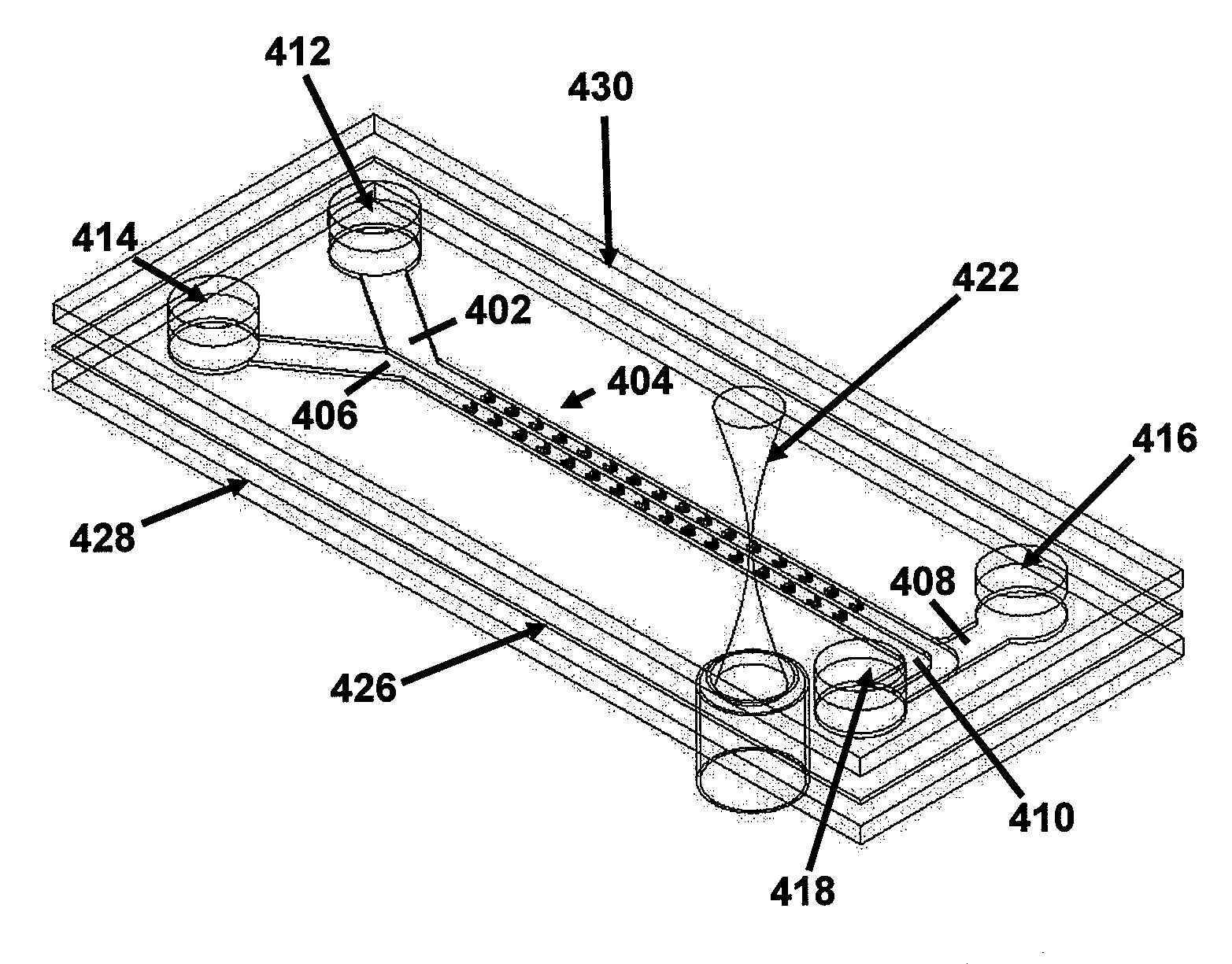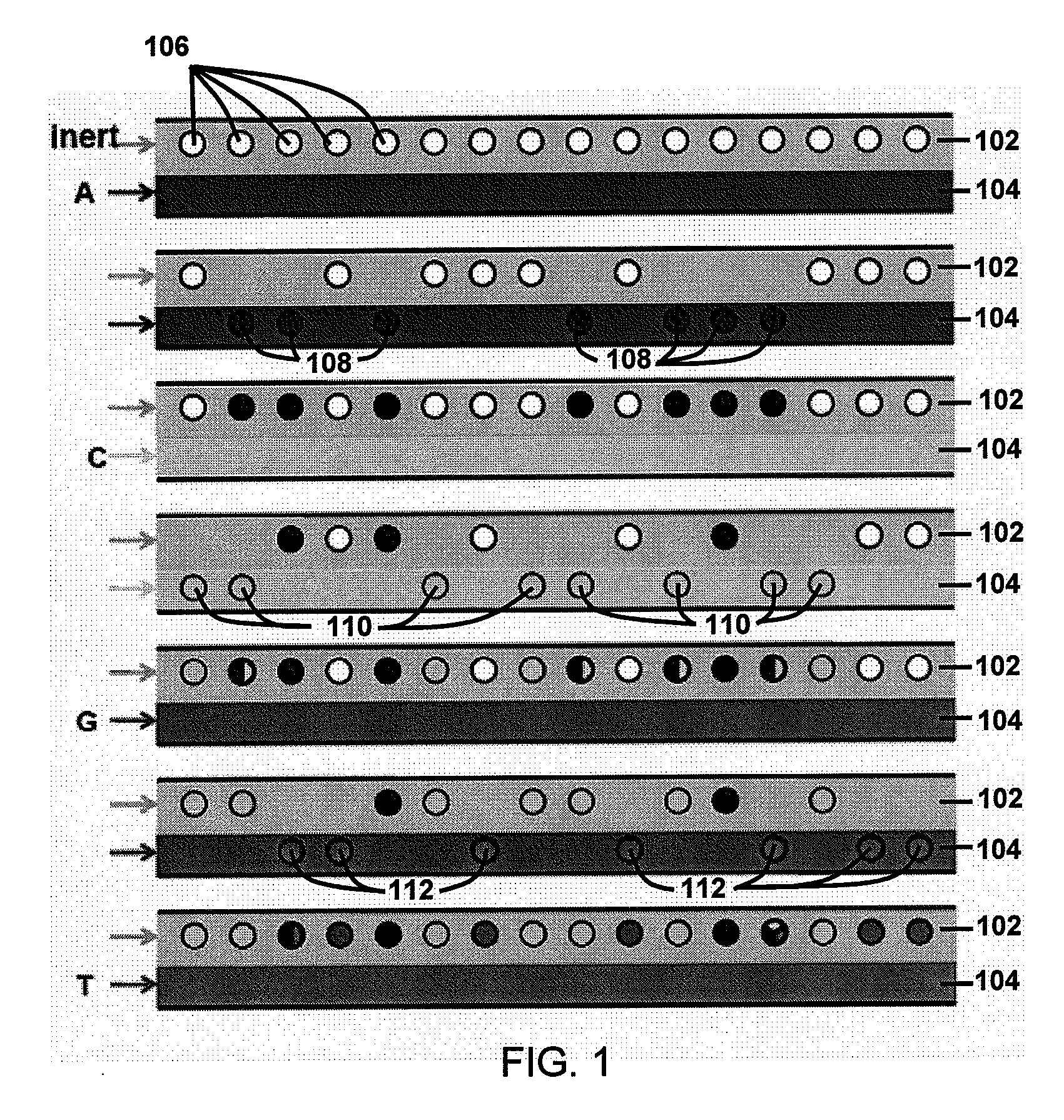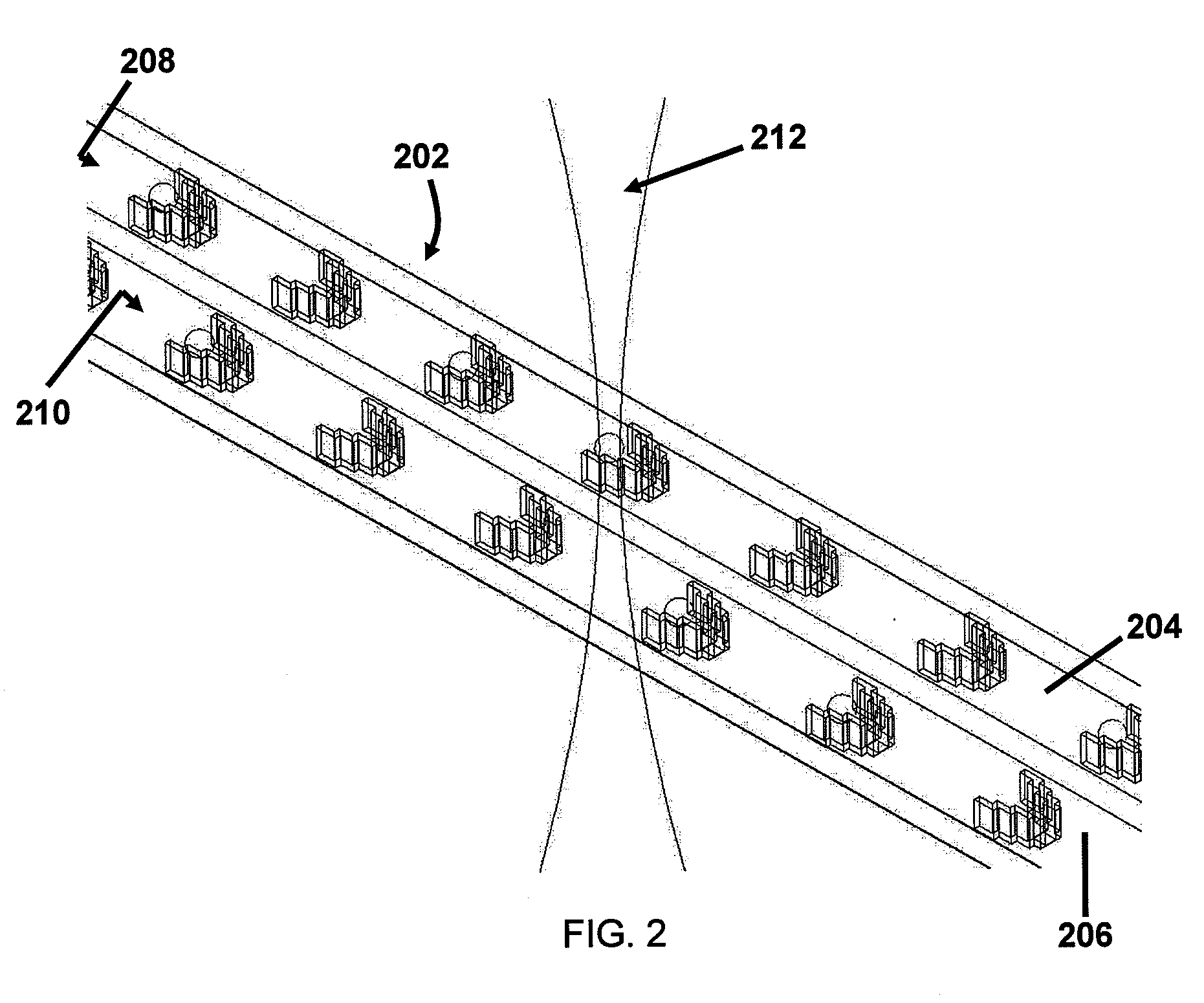Combinatorial chemistry reaction cell with optical tweezers
a technology of optical tweezers and reaction cells, which is applied in the direction of fluid controllers, chemistry apparatus and processes, laboratory glassware, etc., can solve the problems of complex multi-reactor systems, high yield and high complexity of high-quality oligonucleotides
- Summary
- Abstract
- Description
- Claims
- Application Information
AI Technical Summary
Benefits of technology
Problems solved by technology
Method used
Image
Examples
example
[0045]This Example illustrates a method of forming a microfluidic cell using maskless lithography. Microfluidic cells were fabricated from a patterned SU-8 photoresist layer and from a molded PDMS layer.
[0046]A 4″-inch silicon wafer was used as the substrate for the microfluidic cells. The wafer was cleaned and dehydrated in oven at 125° C. for 30 min. A layer of SU-8 photoresist was spun onto the silicon wafer as follows: The SU-8 was spun on the wafer at 500 rpm for 5 seconds and the spin rate was then raised to 3000 rpm for 30 seconds to achieve the desired thickness of 60 μm. The wafer was then soft baked on a hot plate at 65° C. for 2 minutes and then on another hot plate at 95° C. for 6 minutes.
[0047]The maskless fabricated SU-8 layer was used as a master for replicating a molded PDMS layer. The master was first treated with a release agent (316 Silicone Release Spray, Dow Corning) to help the PDMS release after the molding. A mixed PDMS prepolymer (Sylgard 184: cure agent at ...
PUM
| Property | Measurement | Unit |
|---|---|---|
| diameter | aaaaa | aaaaa |
| width | aaaaa | aaaaa |
| width | aaaaa | aaaaa |
Abstract
Description
Claims
Application Information
 Login to View More
Login to View More - R&D
- Intellectual Property
- Life Sciences
- Materials
- Tech Scout
- Unparalleled Data Quality
- Higher Quality Content
- 60% Fewer Hallucinations
Browse by: Latest US Patents, China's latest patents, Technical Efficacy Thesaurus, Application Domain, Technology Topic, Popular Technical Reports.
© 2025 PatSnap. All rights reserved.Legal|Privacy policy|Modern Slavery Act Transparency Statement|Sitemap|About US| Contact US: help@patsnap.com



